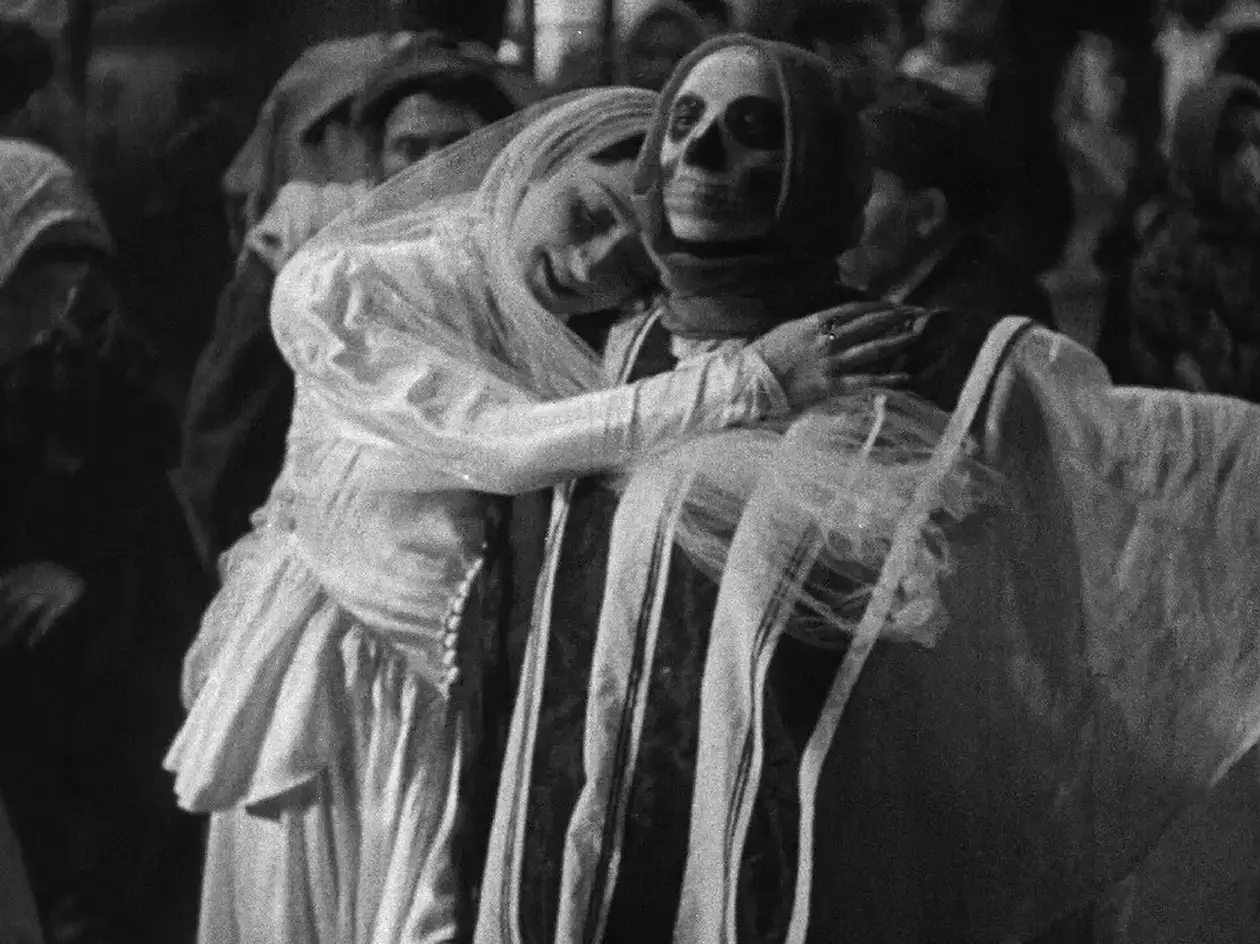Spirit possession! 👻
What to do when a dybbuks, zārs and other Jewish spirits turn up unexpectedly

This is Life as a Sacred Text 🌱, an everybody-celebrating, justice-centered voyage into ancient stories that can illuminate our own lives. It‘s run on a nonprofit, so it’s 100% NAZI FREE. More about the project here, and to subscribe, go here:
Given that next week we get Secular Spooky Day–
a time to metaphorically tell our own inner monsters that they don't scare us, or a time that was once, in a different culture and a different time, considered a liminal time when boundaries between worlds was considered crossable–
I thought it'd be a good time to share some stuff from an article by Professor Kate Miriam Loewenthal from the British Royal College of Psychiatrists on the topic of Jewish spirit possession.
Dr. Lowenthal is an Orthodox Jew herself, it seems, so this was written with the respectful insider/outsider perspective of someone trying to communicate to her colleagues what might happen if a Yid showed up on their doorsteps talking about such matters. Not because she thought that they were coming from an unfathomable place– or, notably, because they were necessarily mentally ill– for doing so.
I'm basically reproducing and condensing her work here, all credit to her.
Again, these are the words of Professor Kate Miriam Loewenthal.
But since I do have a comment or two of my own, I'll have her words in roman and my own notes in italics.
Dybbukim and other malign spirit visitors:
A dybbuk is the wandering spirit of a deceased person who has been unable to enter purgatory or paradise. The dybbuk usually enters a low-status member of Eastern-European Jewish society; women and children being most commonly possessed. The spirit is usually very badly-behaved, notably accusing respected members of the community of embarrassing sexual sins.
Same as it ever was. See also: Women and accusations of witchcraft, in Christian and Jewish cultures.

The phenomenon was reported from the 16th -19th centuries, and disappeared in the early 20th Century.
My own mother was raised in the 50's by immigrant grandparents and their children – would tell me to hush if I ever talked about how well things were going or if I said that I was confident about something coming to pass. "The dybbuks are listening," she'd say, implying that they'd mess up any plans they heard about. This isn't the possession about which Lowenthal speaks, but in the world in which I was raised– 1980s suburbia!– dybbuks still existed, mattered.
At about the period when dybbuk possession became less common, the dybbuk theme was often deployed in literature and on the stage – the most famous examples are Ansky’s Dybbuk, and Bashevis Singer’s The Slave. Here is an example of dybbuk possession:
A Jewish woman in eighteenth century Poland was possessed by a "Baal Dovor" (demon) which spoke from her throat in Polish (not her first language), causing great physical pain. It would not allow her to pray, study sacred texts or otherwise use holy words (i.e. liturgical Hebrew), would not let her go to the synagogue, and created a shameful disturbance on the Day of Atonement when she did try to go to the synagogue. Three exorcisms by eminent rabbis were carried out. The first two exorcisms were only partially successful and the spirit returned. The final episode was not a typical exorcism. A third voice - not that of the victim or of the spirit - was heard, which sounded disembodied. Witnesses recognised the voice as that of a famous rabbi who had died some years previously. The voice said that the woman was a righteous, saintly individual, that she would get better, and would bear a son. She did get better and bear a son.
Criteria for Dybbuk possession:
- A dybbuk is the soul of a deceased person which has entered another person prior to heavenly judgment of the soul. (Possession by a soul after its judgment is said to be a gilgul (reincarnation) and involves a complete "takeover")
- Both the dybbuk and the victim remain conscious and co-exist in the same body. The victim is typically distressed.
- The victim is more likely to be female than male, while the dybbuk is more likely to be male than female.
What do we think this is about??
- Special means are necessary to expel the dybbuk.
Features which may be present (and not generally typical of Dissociative Identity Disorder or DID):
- The quality of the victim's voice is changed ("strange, high-pitched tone").
- Speech may not be accompanied by movements of lips or tongue.
- A mobile bulge, anywhere in the victim's body.
- While dybbuk possession may be viewed as a form of dissociative disorder, the state differs from DID in several respects. Apart from those mentioned above, the key feature of dybbuk possession is that there are normally only just two persona, whereas DID typically usually involves several or many sub-personalities, often with the number increasing over time.
Dybbuk became one of many derogated “primitive beliefs,” and malign spirits are not now reported among western Jews.
I want to just pause on this sentence for a second. Other people deride dybbuk possession as "primitive" and– surprise!!– the people who used to report experiencing such things no longer do.
Now, we can debate whether or not this phenomenon is more analogous to reporting sexual assault – not believed, so do not report, but that has no bearing on whether or not the thing is still happening, only on whether or not it is named, discussed in public spaces, visible. Or whether dybbuk possession was only possible in times and places where it was allowed as conceivable. Or, whether what had been once named as dybbuk possession was subsequently named as something else, as is suggested in work on possession in other cultures.


